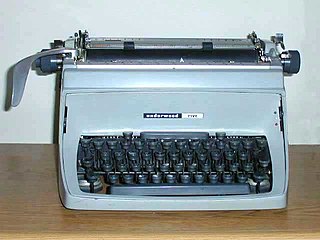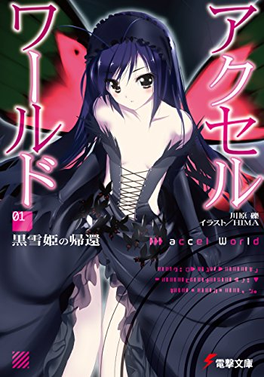
ASCII, abbreviated from American Standard Code for Information Interchange, is a character encoding standard for electronic communication. ASCII codes represent text in computers, telecommunications equipment, and other devices. Because of technical limitations of computer systems at the time it was invented, ASCII has just 128 code points, of which only 95 are printable characters, which severely limited its scope. All modern computer systems instead use Unicode, which has millions of code points, but the first 128 of these are the same as the ASCII set.

ASCII art is a graphic design technique that uses computers for presentation and consists of pictures pieced together from the 95 printable characters defined by the ASCII Standard from 1963 and ASCII compliant character sets with proprietary extended characters. The term is also loosely used to refer to text-based visual art in general. ASCII art can be created with any text editor, and is often used with free-form languages. Most examples of ASCII art require a fixed-width font such as Courier for presentation.
The keyboard for IBM PC-compatible computers is standardized. However, during the more than 30 years of PC architecture being frequently updated, many keyboard layout variations have been developed.

The infinite monkey theorem states that a monkey hitting keys at random on a typewriter keyboard for an infinite amount of time will almost surely type any given text, such as the complete works of William Shakespeare. In fact, the monkey would almost surely type every possible finite text an infinite number of times. However, the probability that monkeys filling the entire observable universe would type a single complete work, such as Shakespeare's Hamlet, is so tiny that the chance of it occurring during a period of time hundreds of thousands of orders of magnitude longer than the age of the universe is extremely low (but technically not zero). The theorem can be generalized to state that any sequence of events which has a non-zero probability of happening will almost certainly eventually occur, given enough time.

A typewriter is a mechanical or electromechanical machine for typing characters. Typically, a typewriter has an array of keys, and each one causes a different single character to be produced on paper by striking an inked ribbon selectively against the paper with a type element. At the end of the nineteenth century, the term 'typewriter' was also applied to a person who used such a device.

Roguelike is a subgenre of role-playing computer games traditionally characterized by a dungeon crawl through procedurally generated levels, turn-based gameplay, grid-based movement, and permanent death of the player character. Most roguelikes are based on a high fantasy narrative, reflecting their influence from tabletop role playing games such as Dungeons & Dragons.
The symbol # is known variously in English-speaking regions as the number sign, hash, or pound sign. The symbol has historically been used for a wide range of purposes including the designation of an ordinal number and as a ligatured abbreviation for pounds avoirdupois – having been derived from the now-rare ℔.
A carriage return, sometimes known as a cartridge return and often shortened to CR, <CR> or return, is a control character or mechanism used to reset a device's position to the beginning of a line of text. It is closely associated with the line feed and newline concepts, although it can be considered separately in its own right.

The QWERTZ or QWERTZU keyboard is a typewriter and keyboard layout widely used in Central Europe. The name comes from the first six letters at the top left of the keyboard:.

The tab keyTab ↹ on a keyboard is used to advance the cursor to the next tab stop.
The backtick` is a typographical mark used mainly in computing. It is also known as backquote, grave, or grave accent.

Backspace is the keyboard key that originally pushed the typewriter carriage one position backwards and in modern computer systems moves the display cursor one position backwards, deletes the character at that position, and shifts back the text after that position by one position.

The IBM 2741 is a printing computer terminal that was introduced in 1965. Compared to the teletypewriter machines that were commonly used as printing terminals at the time, the 2741 offers 50% higher speed, much higher quality printing, quieter operation, interchangeable type fonts, and both upper and lower case letters.

Filler text is text that shares some characteristics of a real written text, but is random or otherwise generated. It may be used to display a sample of fonts, generate text for testing, or to spoof an e-mail spam filter. The process of using filler text is sometimes called greeking, although the text itself may be nonsense, or largely Latin, as in Lorem ipsum.

A computer keyboard is a peripheral input device modeled after the typewriter keyboard which uses an arrangement of buttons or keys to act as mechanical levers or electronic switches. Replacing early punched cards and paper tape technology, interaction via teleprinter-style keyboards have been the main input method for computers since the 1970s, supplemented by the computer mouse since the 1980s.

The IBM Selectric typewriter was a highly successful line of electric typewriters introduced by IBM on 31 July 1961.

A keyboard layout is any specific physical, visual or functional arrangement of the keys, legends, or key-meaning associations (respectively) of a computer keyboard, mobile phone, or other computer-controlled typographic keyboard.

Accel World is a Japanese light novel series written by Reki Kawahara and illustrated by HiMA. The series began publication in ASCII Media Works' Dengeki Bunko imprint from February 2009 and is licensed in North America by Yen Press. Two manga series began serialization in Dengeki Bunko Magazine from May 2010, with another series beginning serialization in Dengeki Daioh in January 2013. An anime adaptation by Sunrise aired in Japan between April and September 2012. An English-language version began streaming on Viz Media's Neon Alley service from April 2013. Two video games were released for the PlayStation Portable and PlayStation 3 in September 2012, and January 2013, each containing an original video animation episode. An anime film titled Accel World: Infinite Burst featuring an original story by Kawahara premiered in Japan in July 2016.

A bit-paired keyboard is a keyboard where the layout of shifted keys corresponds to columns in the ASCII (1963) table, archetypally the Teletype Model 33 (1963) keyboard. This was later contrasted with a typewriter-paired keyboard, where the layout of shifted keys corresponds to electric typewriter layouts, notably the IBM Selectric (1961). The difference is most visible in the digits row : compared with mechanical typewriters, bit-paired keyboards remove the _ character from 6 and shift the remaining &* from 7890 to 6789, while typewriter-paired keyboards replace 3 characters: ⇧ Shift+2 from " to @⇧ Shift+6 from _ to ^ and ⇧ Shift+8 from ' to *. An important subtlety is that ASCII was based on mechanical typewriters, but electric typewriters became popular during the same period that ASCII was adopted, and made their own changes to layout. Thus differences between bit-paired and (electric) typewriter-paired keyboards are due to the differences of both of these from earlier mechanical typewriters.
Caret is the name used familiarly for the character ^, provided on most QWERTY keyboards by typing ⇧ Shift+6. The symbol has a variety of uses in programming and mathematics. The name "caret" arose from its visual similarity to the original proofreader's caret, a mark used in proofreading to indicate where a punctuation mark, word, or phrase should be inserted into a document. The formal ASCII standard (X3.64.1977) calls it a "circumflex".

















